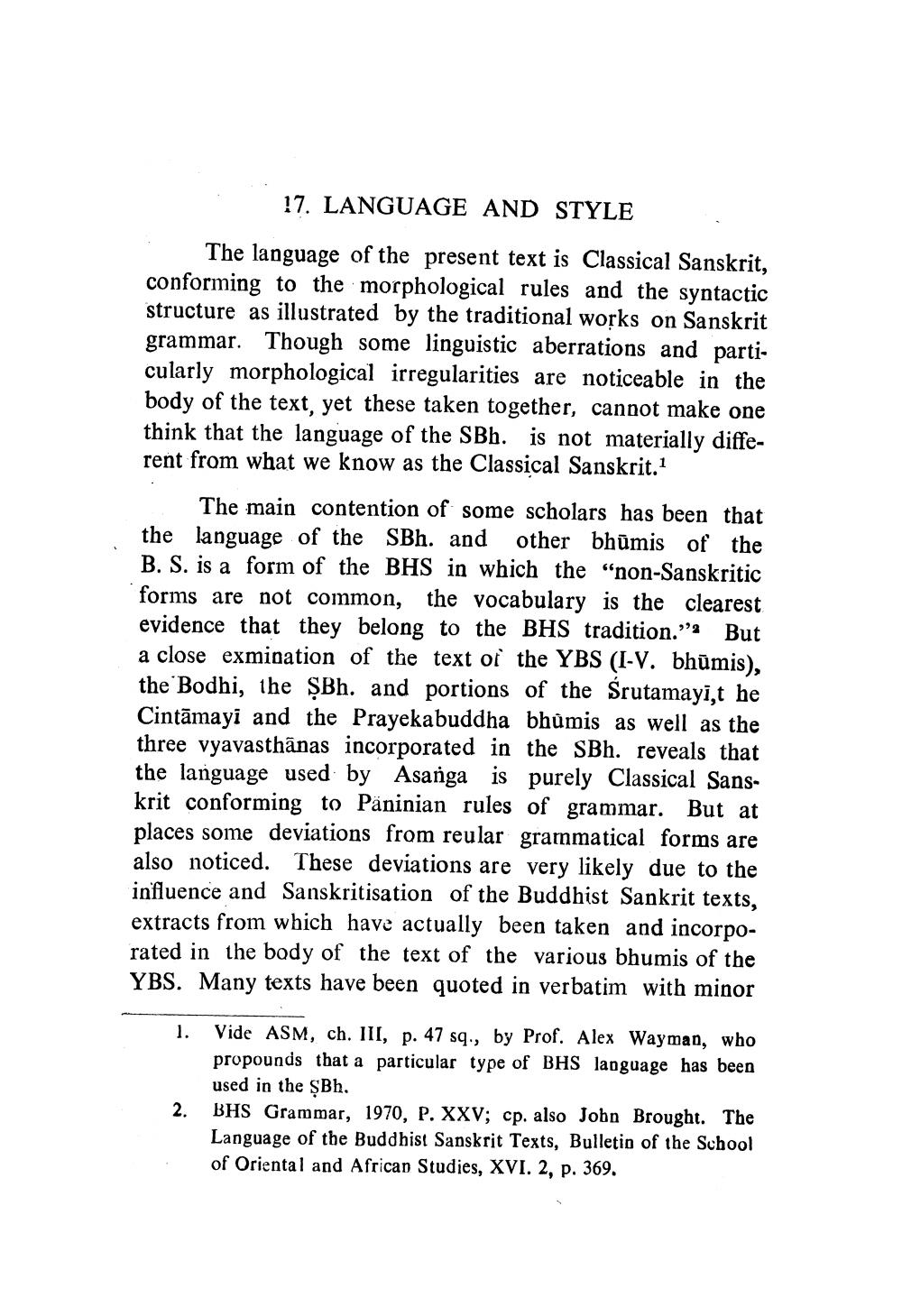________________
17. LANGUAGE AND STYLE
The language of the present text is Classical Sanskrit, conforming to the morphological rules and the syntactic structure as illustrated by the traditional works on Sanskrit grammar. Though some linguistic aberrations and particularly morphological irregularities are noticeable in the body of the text, yet these taken together, cannot make one think that the language of the SBh. is not materially different from what we know as the Classical Sanskrit.1
The main contention of some scholars has been that the language of the SBh. and other bhumis of the B. S. is a form of the BHS in which the "non-Sanskritic forms are not common, the vocabulary is the clearest evidence that they belong to the BHS tradition." But a close exmination of the text of the YBS (I-V. bhūmis), the Bodhi, the $Bh. and portions of the Śrutamayi,t he Cintamayi and the Prayekabuddha bhumis as well as the three vyavasthanas incorporated in the SBh. reveals that the language used by Asanga is purely Classical Sanskrit conforming to Päninian rules of grammar. But at places some deviations from reular grammatical forms are also noticed. These deviations are very likely due to the influence and Sanskritisation of the Buddhist Sankrit texts, extracts from which have actually been taken and incorporated in the body of the text of the various bhumis of the YBS. Many texts have been quoted in verbatim with minor
1.
2.
Vide ASM, ch. III, p. 47 sq., by Prof. Alex Wayman, who propounds that a particular type of BHS language has been used in the SBh.
BHS Grammar, 1970, P. XXV; cp. also John Brought. The Language of the Buddhist Sanskrit Texts, Bulletin of the School of Oriental and African Studies, XVI. 2, p. 369.




